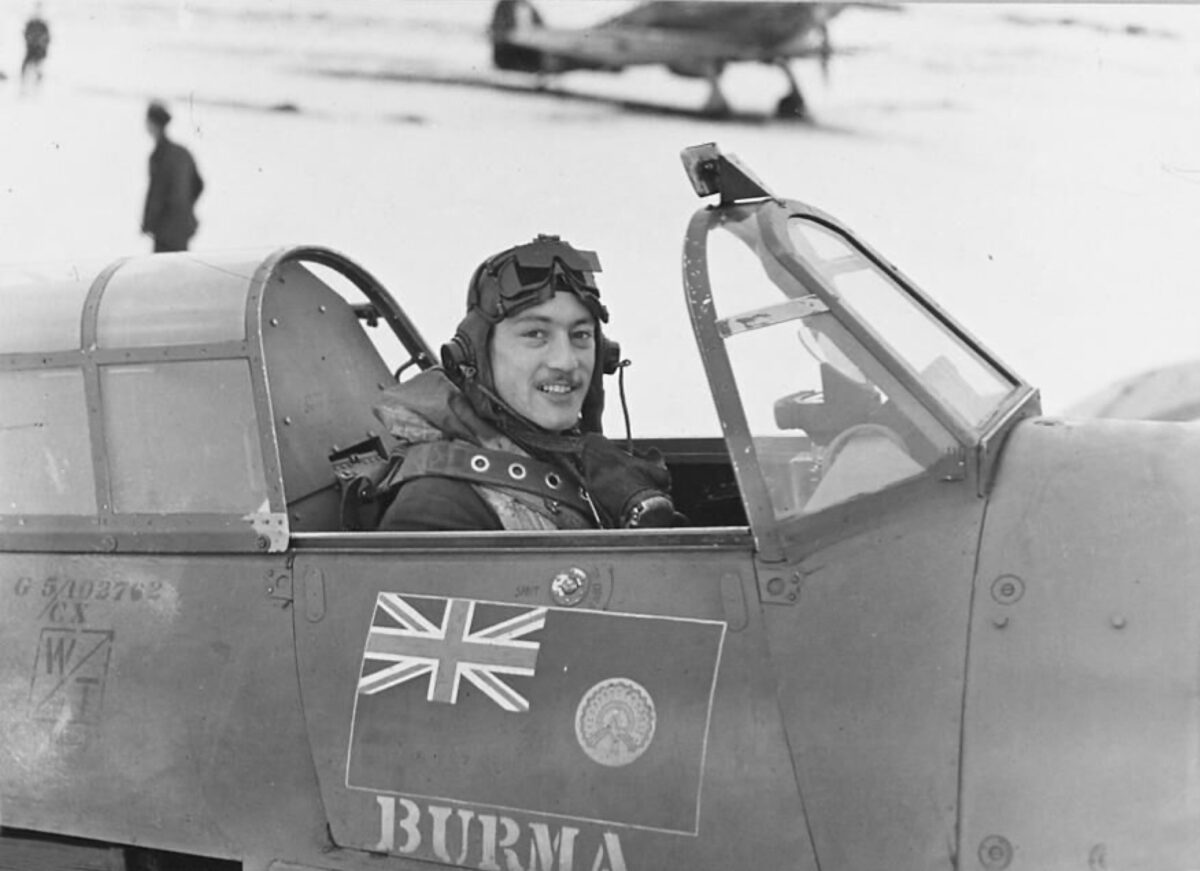Robert Stanford Tuck, along with his great courage and flying skill, also had another trait working for him. That was luck–incredible luck–which enabled him to escape from many life-threatening situations unharmed. “Tuck’s luck” became a legend in the Royal Air Force.
Tuck was practicing aerobatic flying in a Gloster Gladiator biplane fighter in 1938, along with fellow pilot Leslie Bicknall, when a trio of Gladiators came out of a cloud directly ahead of them. Bicknall banked sharply to avoid colliding with the Gladiators’ “Vic” formation. As Tuck followed, his lower port wing struck Bicknall’s Gladiator, breaking off its tail and badly damaging his own plane’s wing.
Bicknall parachuted to safety, but Tuck’s problems were only beginning. “His smashed wing was flapping most alarmingly,” wrote Larry Forrester, Tuck’s biographer. “And there was no way of telling whether his under-carriage was damaged–or even if it was still there.” Tuck knew landing the Gladiator would be risky. The lower wing might break off as he made his approach. He carefully flew the damaged Gladiator back to his home field at Hornchurch and managed to land safely. Only as the ground crew dragged the Gladiator away did the broken lower wing fall off.
Another example of Tuck’s luck occurred when he was flying Spitfires with 92 Squadron on missions over Dunkirk in May 1940. Tuck had already flown one mission over Dunkirk on May 23, and he was waiting at the home base at Croyden when five bulletproof windshields arrived. The ground crew immediately refitted three of 92 Squadron’s Spitfire Mark Is with the bulletproof screens before the squadron took off on another mission over Dunkirk the same day–Tuck’s Spitfire was one of them. An hour later, over France, the squadron tangled with 40 twin-engine Messerchmitt Me-110s. Tuck downed one, then encountered another head-on. The Me-110 barely missed Tuck’s Spitfire. In his relief at having survived, Tuck noticed on the “top left and bottom right corners of his windscreen there were ugly, opaque blotches, staring in at him like big blind eyes.”
Two shells from the Me-110’s 20mm cannon had struck Tuck’s Spitfire squarely on the windscreen. “If the fitters hadn’t installed the new type screen just over an hour before, these hits would have come through and taken off his head,” wrote Forrester. Tuck went after the Me-110 and shot it down.
While commanding the Duxford Wing in 1941, Tuck assisted in correcting the teething troubles the RAF was having with their Hawker 1A Typhoon fighter-bombers. Part of the problem involved carbon monoxide fumes from the fighters’ exhausts that came back into the cockpit, sometimes in sufficient quantities to nauseate the pilots. Hawker Aircraft fitted a box in one Typhoon’s cockpit that was supposed to reduce the amount of carbon monoxide inside the cockpit.
Tuck flew a number of test flights in the modified Typhoon. One day, near the end of the test flights, he was walking out to the test Typhoon when the station commander, a Group Capt. MacDonald, called him on the telephone. Tuck told another pilot, an Argentinian named Dack, to take the Typhoon up. He talked for 10 minutes with the station commander, then “went out and sat in a cane chair, smoking and looking out over the field.” Tuck watched as the Typhoon he had intended to fly crashed and exploded near the airfield.
Tests later showed that the box that was supposed to trap the carbon monoxide fumes had malfunctioned, pumping enough fumes into the Typhoon’s cockpit to cause its pilot to pass out. That was one phone call Tuck would not soon forget. He later called MacDonald and said, “Sir, I want you to know you can ring me just any time.”
These are only a few examples of the fantastic luck that made people shake their heads and say, “Tuck’s luck”–some have it, some don’t.





